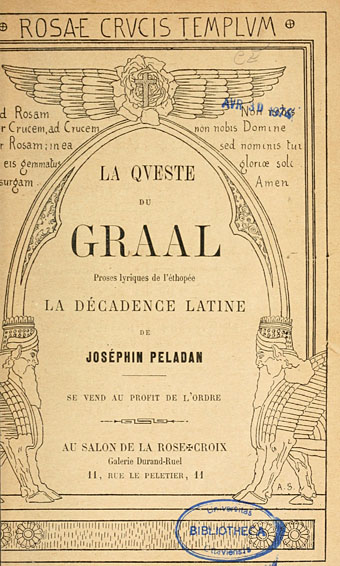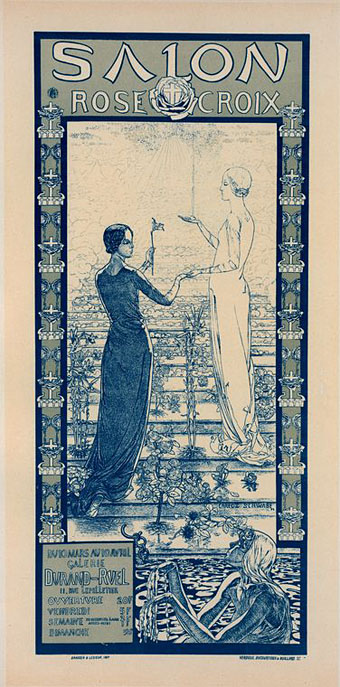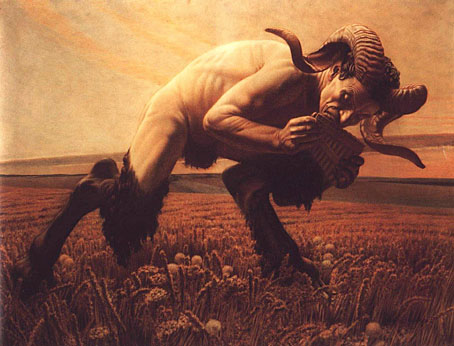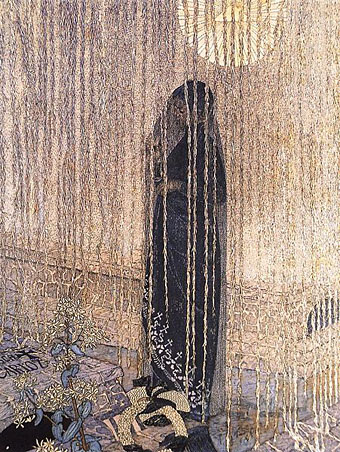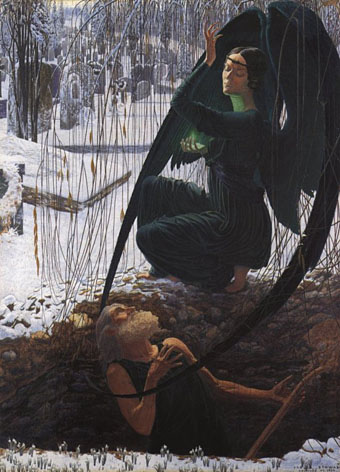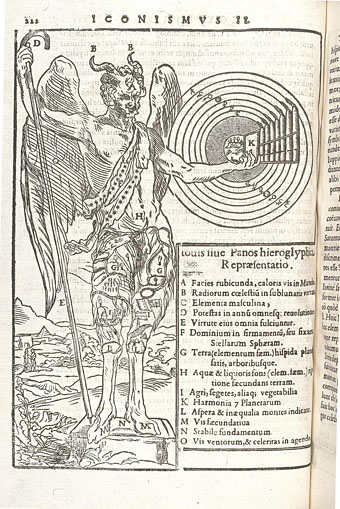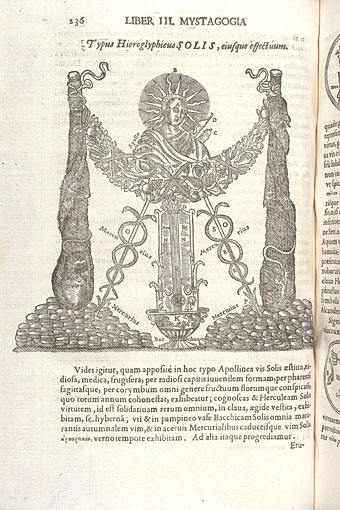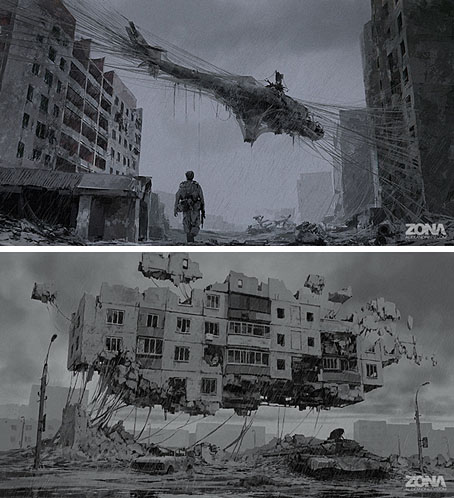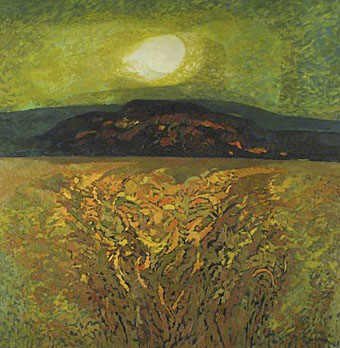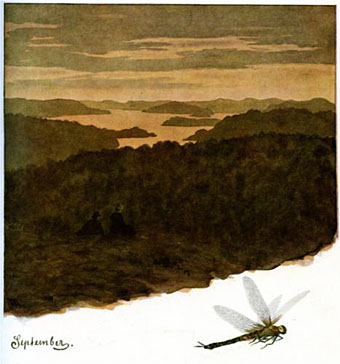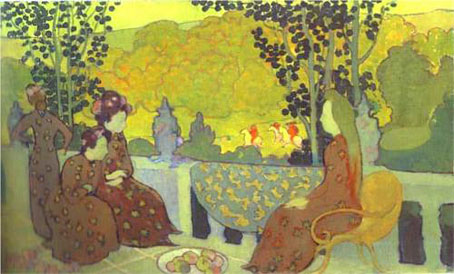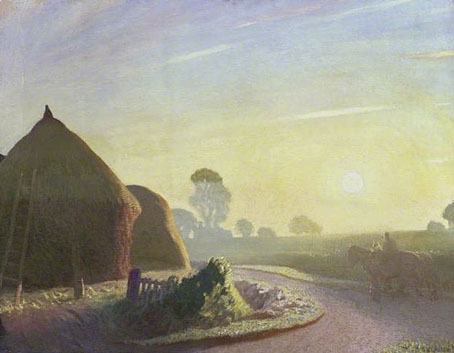Carlos Schwabe’s poster from 1892 for the first of Joséphin Péladan’s art and music Salons de la Rose + Croix. The “Sâr” Peladan’s imposition on the artistic life of Paris in the 1890s may have the smack of a vanity project but he caused enough of a stir to give Rosicrucianism an unlikely fashionabilty for a while. The roster of contributing artists is also impressive, almost a who’s who of Symbolist art. There were six salons in all, the last being in 1897. The poster for the fifth salon by Armand Point & Léonard Sarluis shows Perseus holding the decapitated head of Émile Zola. The evangelist of literary realism was one of Symbolism’s arch-enemies but that didn’t prevent Carlos Schwabe from producing illustrations for Le Rêve.
The pages below are from Peladan’s many books, La Queste du Graal: Proses Lyriques de l’Éthopée; La Décadence Latine (1892). The illustrations aren’t the best reproductions, and they aren’t the greatest artworks either, but they give a sense of what Peladan wanted to see embellishing his own brand of artistic mysticism. Gallica has a Salon de la Rose + Croix catalogue (also from 1892) but like many of the documents archived there the quality leaves a lot to be desired.
